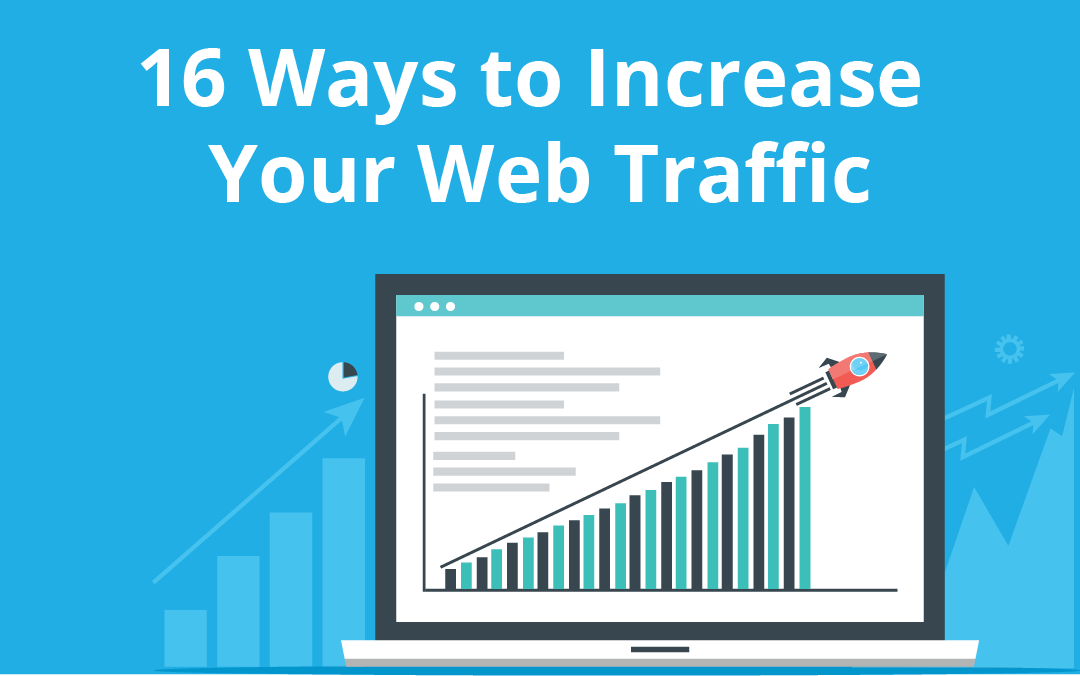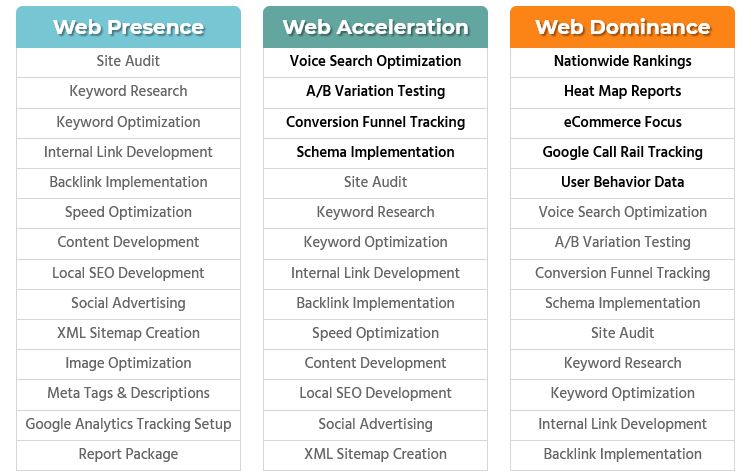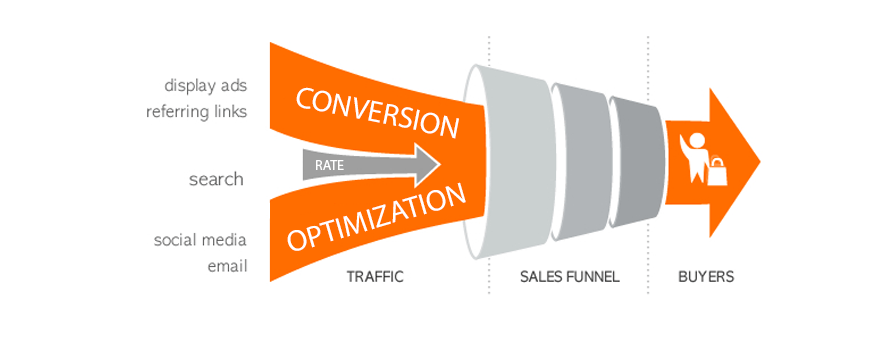In the ever-shifting world of SEO, few things stay the same. Algorithms evolve, user expectations rise, and...

Inside Look: How Google, ChatGPT, and DeepSeek Manage YMYL Queries
YMYL—or “Your Money or Your Life”—refers to topics that can significantly impact a person’s health, finances, safety, or overall well-being. For organizations operating online, especially those dealing with health, finance, or legal advice, YMYL guidelines from Google carry substantial weight. Marketers, SEO specialists, digital marketing managers, web developers, and CTOs alike need to comprehend how search engines and AI engines handle these queries to maintain high visibility and credibility. In this first half of our article, we’ll discuss YMYL essentials, explore how Google addresses such sensitive content, and examine how ChatGPT interprets and responds to YMYL queries. By the end of this guide, you’ll be better prepared to shape your SEO strategies around YMYL best practices for improved search engine ranking signals and user trust.
1. What Is YMYL?
1.1 Definition and Core Concepts
YMYL stands for “Your Money or Your Life.” It encompasses pages or content topics that could influence a user’s future happiness, health, financial stability, or safety. Examples include medical advice, financial planning, legal information, or even emotionally sensitive issues such as mental well-being.
Search engines view YMYL topics as high-risk because misinformation in these areas can lead to detrimental consequences. As a result, platforms like Google place stringent standards on such content, emphasizing E-A-T (Expertise, Authoritativeness, and Trustworthiness) to ensure quality and safety.
1.2 Types of YMYL Topics
While the scope of YMYL is broad, certain categories stand out:
- Health and Medical: Diet plans, medical diagnoses, treatment recommendations, and mental health guidance.
- Financial: Investment tips, tax advice, budgeting strategies, and discussions around retirement funds.
- Legal: Contractual agreements, criminal laws, civil rights, and any information that can influence legal decisions.
- Safety and Security: Emergency preparedness, crime prevention tips, and details on cybersecurity practices.
1.3 Why Search Engines Treat YMYL Differently
The stakes are high when it comes to YMYL. Inaccurate or deceptive content in these areas can lead to severe ramifications, such as financial losses or health risks. Therefore, Google algorithm updates often pay extra attention to YMYL material, and new AI search tools—like ChatGPT and DeepSeek—are likewise developing checks to ensure reliable outputs.
Key Insight:
If your site covers topics that affect a person’s well-being or financial stability, the rules of engagement are stricter than ever. Make sure you comply with E-A-T, maintain accurate references, and keep content up to date.
2. Google’s Approach to YMYL Queries
Google has long been the dominant player in online search, and its E-A-T guidelines effectively shape how YMYL content is ranked. Let’s break down how Google’s approach influences SEO best practices for YMYL compliance.
2.1 Google’s E-A-T Guidelines
Expertise, Authoritativeness, and Trustworthiness—the bedrock of Google’s content evaluation—are especially crucial for YMYL pages. While E-A-T isn’t an official ranking factor in the sense of direct algorithms, it’s a guiding principle behind how Google’s Quality Raters assess content.
- Expertise: Articles or webpages are expected to be created by credentialed professionals or subject matter experts.
- Authoritativeness: Sites should have a history or reputation of producing trustworthy information. Signals such as backlinks from reputable domains help build authority.
- Trustworthiness: Secure connections (HTTPS), transparent “About Us” pages, and clear contact information enhance trust.
For YMYL content, demonstrating E-A-T is indispensable. Poor-quality or poorly researched material may not only rank lower but also risk penalties in subsequent Google algorithm updates.
2.2 Core Updates and YMYL-Specific Policies
Google periodically releases Core Updates aimed at improving the quality and relevance of search results. These updates often focus heavily on YMYL topics, refining how the algorithm assesses expertise and trust. Some YMYL-specific policies include:
- Stringent Review Standards: Google’s quality evaluators are instructed to apply tighter scrutiny to medical, financial, and legal content.
- Credible External References: Links to well-known institutions (e.g., WHO, official government websites) significantly boost content credibility.
- User Intent Alignment: Meeting user intent in YMYL queries means providing verified, accurate insights rather than clickbait or vague opinions.
Quick Tip:
Engaging a certified professional to author or review YMYL content can offer a substantial trust advantage in Google’s eyes.
2.3 Practical Tips for Ranking on Google with YMYL Content
- Prioritize Accuracy: Double-check facts, cite authoritative sources, and update content regularly.
- Showcase Expertise: Include author bios, credentials, and industry associations to demonstrate knowledge.
- Optimize Readability: Use short paragraphs, bullet points, and clear headings so users can easily digest vital information.
- Technical SEO: Implement structured data wherever possible (e.g., medical schema, product schema), as this provides contextual clues to search engines.
Pro Tip:
A consistent update schedule signals to both Google and your audience that your YMYL material is actively maintained, further enhancing trustworthiness.
3. ChatGPT and YMYL
3.1 How Large Language Models Interpret YMYL Topics
ChatGPT is an advanced AI language model designed to generate coherent and contextually relevant responses. However, ChatGPT YMYL compliance poses unique challenges because it draws from vast datasets that include user-generated and potentially unverified content. While ChatGPT excels at understanding context and producing human-like text, it may occasionally:
- Provide outdated or imprecise data if its training set contains inaccuracies.
- Offer generalized advice when faced with complex medical or financial specifics.
- Struggle to cite real-time updates if those occurred after its last training cutoff.
For creators using ChatGPT to generate YMYL articles or web pages, it’s vital to fact-check and review outputs thoroughly. Despite its impressive language capabilities, ChatGPT isn’t an omniscient oracle—especially for specialized YMYL areas where precision is critical.
3.2 Potential Pitfalls in Accuracy and Bias
AI models like ChatGPT rely on patterns from existing text on the internet. Because the internet hosts content of varying reliability, biases and inaccuracies can creep into generated text. In YMYL contexts, such oversights can be damaging—incorrect medical advice or misinformed financial strategies can undermine user trust.
- Confirmation Bias: AI may reinforce popular opinions without challenging incorrect assumptions.
- Lack of Real-World Context: ChatGPT doesn’t “understand” human consequences in the same way humans do.
- Limited Accountability: An AI model’s training data might not always include disclaimers or disclaim contradictory sources.
Typical AI-Generated Content Challenges vs. Recommended User Actions
| Challenge | Description | Recommended Action |
|---|---|---|
| Outdated Information | The AI may reference older data or policies. | Always cross-check with recent official sources. |
| Incomplete Context | AI might miss nuance or localized regulations. | Add context-specific details during review. |
| Lack of Citations | AI-generated text often provides no direct references. | Manually insert credible links and citations. |
| Possible Biases | Biases can slip in from diverse internet sources. | Review content for neutrality and accuracy. |
Keeping these points in mind, it’s wise to fact-check, review, and refine any YMYL content generated by ChatGPT before publication.
3.3 Leveraging ChatGPT Responsibly for Content Creation
Despite its limitations, ChatGPT can speed up content ideation and drafting processes. Marketers can brainstorm outlines, gather ideas, and refine brand voice using ChatGPT’s generative capabilities. The key lies in:
- Post-Generation Review: All YMYL facts must be verified by qualified experts.
- Adding Credible Citations: Cite reputable sources like government or medical institutions.
- Staying Current: Supplement ChatGPT’s output with real-time information and newer references.
SEO Best Practices for YMYL:
When using AI content generation tools, ensure each piece is meticulously vetted. This not only meets user expectations for trustworthy information but aligns with Google algorithm updates aimed at filtering out misleading or unverified claims.
4. DeepSeek: A Rising AI Powerhouse
Following our discussion of how Google and ChatGPT approach YMYL content, let’s turn to DeepSeek, an emerging AI search engine that’s gaining attention for its focus on precision and authority. Although still less popular than Google, DeepSeek is quickly expanding its user base by emphasizing quality over quantity—an approach particularly relevant to high-stakes YMYL topics.
4.1 Unique Features and Data Sources
DeepSeek sets itself apart by:
- Structured Indexing: Rather than merely crawling and indexing pages, it deploys advanced entity recognition to identify relationships between concepts.
- Expert-Reviewed Datasets: DeepSeek aims to incorporate curated sources, favoring academic journals, reputable news outlets, and peer-reviewed papers for YMYL topics.
- User Feedback Integration: The platform places a premium on community feedback—especially from verified professionals—to help refine search results.
By weighting professional input more heavily, DeepSeek aspires to reduce misinformation, making it especially appealing to those seeking trustworthy answers in areas like medicine, finance, and law.
4.2 DeepSeek’s Focus on Precision and Authority
DeepSeek employs an authority-based algorithm that resembles Google’s E-A-T guidelines but with a stronger emphasis on verified expertise:
- Expertise Verification: DeepSeek allows professionals (e.g., licensed doctors, financial advisors) to verify credentials. Content from verified users often ranks higher for YMYL queries.
- Cross-Referencing: The engine cross-references claims against authoritative databases (government, academic institutions) to minimize inaccuracies.
- Transparent Scoring: Unlike many search engines, DeepSeek publishes partial transparency reports that outline how trust scores are assigned.
This methodology aligns closely with YMYL guidelines, reflecting the broader industry push for search engine ranking signals based on credibility and trustworthiness rather than mere popularity.
4.3 Comparative Strengths and Weaknesses vs. Google & ChatGPT
While Google remains the most robust and widely used engine, and ChatGPT offers unparalleled convenience in AI content generation, DeepSeek has some distinct advantages:
- Strengths:
- Verified professional input for YMYL content
- Cross-referencing features reduce misinformation risk
- Transparent scoring fosters user trust
- Weaknesses:
- Smaller user base means potentially lower immediate visibility
- Specialized approach might limit the breadth of indexed content
- Still evolving, with fewer known integrations and tools
5. Crafting YMYL Content: Best Practices
Ensuring your site meets YMYL guidelines involves more than just adding disclaimers. You need a holistic approach to content creation, structuring, and review. Below are essential strategies to keep your material both SEO-friendly and user-centric.
5.1 Building Trust Through Quality and Credibility
- Professional Authorship: Whenever possible, involve certified experts—such as doctors, lawyers, or CPAs—to produce or validate your content.
- Transparent Editing Process: Show that your work is peer-reviewed or checked by subject matter experts.
- Citations & References: Link to reputable organizations (e.g., WHO, FDA, SEC) to back up claims, reinforcing E-A-T and trustworthiness.
5.2 Compliance with Regulations and Guidelines
- Legal Requirements: For medical content, consider FDA or HIPAA guidelines; for financial content, reference regulatory bodies.
- User Data Protection: Secure user information with HTTPS and adhere to GDPR or equivalent privacy rules.
- Explicit Disclaimers: State clearly that your content is informational, encouraging readers to consult professionals for personalized advice.
5.3 Application Tips & Eligibility Criteria
If your website handles user-generated YMYL material or offers specialized consultations, you’ll want to define eligibility criteria and guidelines for publication. For instance:
- Contributor Eligibility:
- Verified professionals must provide credentials and references.
- Guest authors need to cite sources and undergo a content review.
- Important Considerations:
- Ensure all data (e.g., health stats, financial figures) is current and accurately attributed.
- Maintain an editorial workflow that flags older posts for periodic fact-checking.
- Application Tips:
- Develop an editorial calendar for regular updates, especially in rapidly changing fields like finance or health.
- Implement a “YMYL Review Team” consisting of specialists to approve major articles or revisions.
Pro Tip:
Encourage user feedback through surveys, ratings, or comment sections. This engagement can reveal potential inaccuracies and improve the overall reliability of your site.
6. Technical SEO Considerations
While the content itself is crucial for ranking on Google and other search engines, technical SEO elements can further reinforce a site’s trustworthiness—particularly for YMYL pages.
6.1 Structured Data and Schema Markup
Deploying structured data is a best practice for any site, but it’s particularly impactful for YMYL content where clarity is key:
- Health Schema: For medical topics, implement Medical WebPage or MedicalArticle to provide search engines with specific details.
- Financial Schema: If you’re offering financial guidance, consider FinancialProduct or other relevant schemas.
- Review Schema: If professionals are reviewing or endorsing content, leverage Review or AggregateRating.
6.2 Site Security (HTTPS) and Mobile Responsiveness
- HTTPS: Signifies that your website encrypts user data, aligning with Google algorithm updates that favor secure websites.
- Mobile-First Design: A large percentage of YMYL searches (particularly in health and finance) now come from mobile devices. Make sure your site is optimized for smaller screens and fast load times.
6.3 Expertise Signals in Content Structure
- Author Boxes: Introduce each writer’s credentials at the beginning or end of articles, including links to relevant associations or professional profiles.
- Linking Strategy: Interlink related pieces of YMYL content so users can follow a logical path of reputable resources.
- Regular Content Audits: Periodically review published material to ensure it reflects the latest guidelines, data, and best practices.
7. Additional FAQs
Below are more frequently asked questions that address technical, practical, and strategic aspects of handling YMYL topics. Use these as starting points to refine your site’s policies and content approach.
Q: How often should I update my YMYL articles to stay current?
A: For most YMYL topics, updating at least once every quarter is a solid guideline, but more frequent updates may be necessary if you operate in a rapidly changing field such as finance or healthcare. Consider the following best practices to keep your YMYL content fresh and reliable:
- Monitor Industry Changes: Stay alert for regulatory updates, medical breakthroughs, or new legal precedents that could impact your content.
- Regular Editorial Reviews: Schedule quarterly or monthly reviews to detect outdated statistics, broken links, or shifting guidelines.
- User Feedback Loop: Encourage comments and questions, then refresh content based on user inquiries or emerging trends.
- Automated Alerts: Set Google Alerts or use industry-specific monitoring tools to stay informed of key developments that might require immediate revisions.
Q: Can I rely on AI content generation entirely for my YMYL pages?
A: While AI tools like ChatGPT offer rapid drafting and idea generation, trusting them exclusively for high-stakes YMYL topics is risky. Here’s why:
- Accuracy Gaps: AI might present outdated information if its data set isn’t current or lacks proper references.
- Lack of Professional Judgment: Sensitive topics in health, law, or finance demand human expertise to interpret regulations and ethical considerations.
- Legal and Ethical Implications: Incorrect or misleading AI-generated advice in YMYL areas can damage your reputation, invite legal scrutiny, and erode user trust.
- Recommended Approach: Use AI for initial outlines and brainstorming, but have certified professionals review and finalize all critical content.
Q: Are there penalties for failing to meet YMYL guidelines?
A: Although Google does not explicitly call them “penalties,” failing to uphold YMYL standards can lead to a noticeable drop in search visibility. When search engine ranking signals detect misinformation or low credibility:
- Lower Rankings: Your pages may slip down in SERPs (Search Engine Results Pages).
- Reduced Traffic: Fewer impressions and clicks result in lower conversions and revenue.
- Damage to Reputation: Users who encounter inaccurate data may lose trust and share negative feedback online.
- Recovery Effort: Regaining momentum often requires a comprehensive overhaul of content, improved E-A-T signals, and a stronger commitment to accuracy.
Q: Do disclaimers really protect me from liability and ranking loss?
A: Disclaimers can be an essential component of a transparent content strategy, but they are not a cure-all. Consider these points:
- Clarifying Content Purpose: A disclaimer helps users understand that the information is for general guidance, not personalized advice.
- Legal Protection: While disclaimers can reduce some liability risk, they must be paired with factual accuracy and adherence to applicable laws.
- User Trust: Readers appreciate honesty about the scope and limitations of your advice, boosting overall credibility.
- Not a Substitute for Compliance: Simply posting a disclaimer won’t meet Google algorithm updates or regulatory standards if the underlying content is misleading or incomplete.
Q: How do I handle user-generated content related to YMYL topics on my forum or blog comments?
A: Moderation is key when dealing with YMYL user contributions, as unchecked statements can spread harmful misinformation. Best practices include:
- Clear Posting Guidelines: Establish rules about citing reliable sources and avoiding unverified claims, particularly for health or financial advice.
- Active Moderation: Assign a dedicated reviewer or team to remove spam, flag unsubstantiated data, and respond to queries.
- Expert Intervention: Invite qualified professionals to participate or oversee forums to maintain the conversation’s integrity.
- Community Reporting Tools: Allow users to flag questionable posts, aiding swift corrective action.
Q: What’s the best way to measure success for my YMYL pages?
A: Evaluating the effectiveness of your YMYL content involves both quantitative and qualitative metrics. Consider tracking:
- Search Engine Ranking Signals: Monitor positions on Google, DeepSeek, and other search engines to gauge visibility improvements or declines.
- User Engagement: Look at page views, time on page, bounce rates, and the number of comments or social shares.
- Conversion Rates: Measure actions like newsletter signups, consultation requests, or purchases to see if your content drives meaningful results.
- Expert Reviews: Periodically ask accredited professionals to audit your articles, ensuring that medical, financial, or legal content remains accurate and up to date.
- User Feedback: Encourage comments, polls, or surveys to understand how well you’re meeting readers’ needs and building trust.
By staying proactive with updates, balancing AI-generated insights with expert review, and measuring key performance indicators, you can keep your YMYL content both authoritative and user-friendly.
8. Comparison Table:
DeepSeek vs. ChatGPT vs. DeepSeek
Below is an expanded comparison focusing on key SEO factors, data sources, and YMYL compliance features:
| Platform | Core Strength | Data Sources | YMYL Compliance Focus | Ideal Use Case |
|---|---|---|---|---|
| Largest search index and advanced ranking | Crawls across the entire internet | E-A-T guidelines & strong YMYL scrutiny | Universal searches; consistent traffic growth | |
| ChatGPT | Fast AI content generation | Vast training data (up to a certain cutoff) | Dependent on user prompts & updates | Content drafts, quick brainstorming sessions |
| DeepSeek | Verified professional contributions | Curated, professional data & feedback | Precision & authority-based algorithm | Highly specialized YMYL queries; trust-based niches |
9. Conclusion
The digital realm is fast-evolving, with Google algorithm updates continually reshaping how we perceive and create YMYL content. Meanwhile, AI tools like ChatGPT and DeepSeek AI search engine are redefining the way users discover and consume essential information on health, finance, and legal matters. For marketers, SEO specialists, and content creators in high-stakes niches, understanding each platform’s approach to YMYL guidelines is no longer optional—it’s a prerequisite for success.
By combining robust fact-checking, credentialed authorship, structured data implementation, and responsible AI usage, you can confidently navigate the complexities of YMYL content. Remember, search engine ranking signals increasingly reward quality and credibility. As these signals evolve, staying informed about best practices—and applying them consistently—will keep you ahead of the competition.
Next Steps
If you’re ready to optimize your YMYL content for Google, ChatGPT, and DeepSeek, or if you simply need more hands-on guidance, contact us at unrealwebmarketing.com. Our team specializes in SEO best practices for YMYL, blending top-tier technical expertise with responsible, expert-driven content strategies. Let’s ensure your site stands out where it matters most—your users’ trust, safety, and well-being.

















